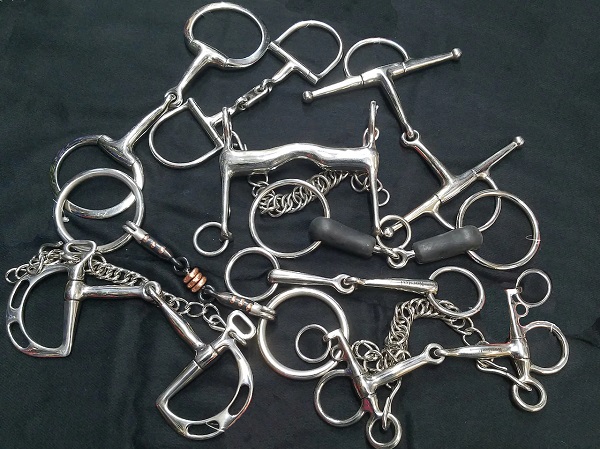
The issue of finding the correct bit can be a complex one. Since bits are made from metal, they can be hard and unforgiving. The very first thing to check when you have a bitting problem is the teeth. Have you had a good floating job done in the last year? Most horses need about a yearly schedule, but some need it more frequently.
Horses who get their tongues over the bit are usually expressing discomfort of some sort. Often that discomfort is from too much pressure on the tongue. Additionally, horses who fuss constantly, stick their tongue out of their mouth and open their mouths are expressing discomfort. Occasionally these habits become so ingrained that the only solution is to remove the bit, but in many cases, you can figure out the problem and solve it with a different style mouthpiece.
Make sure to check your noseband. You should be able to slide a couple fingers between the leather and the nose; if you cannot the nosepiece is too tight. If your horse opens its mouth or does any of the other behaviors above, do not tighten the noseband, look for the source of discomfort. Once you are sure the teeth are not a source of discomfort, then you need to look inside the mouth at the tongue. How big or small does the tongue look? If you open the mouth and see a large tongue leaking over the edges of the teeth, there is little room for a bit, so you will need a thin mouthpiece. A few of those horses will never be comfortable with a bit. If you try to put a thick mouthpiece in this situation often the horse cannot completely shut his mouth. The shape of the roof of the horse’s mouth (the palate) also helps decide how much room there is for a bit. A flat palate means there is less room, while an arched palate leaves plenty of room. A horse with a small tongue can handle a thick mouthpiece and may even appreciate it. A thicker mouthpiece can have a gentler edge against the bars, but if there is no room the thicker bit is worse.
Next to consider is the type of mouthpiece. The commonly used snaffle bit exerts a downward force on the tongue preventing swallowing when rein contact is being taken rather than pushing up into the roof of the mouth as is traditionally believed. Obedient horses who can tolerate the tongue pressure will basically keep their heads in the correct “frame” or position for the sport you choose with only minor moves to swallow. Horses ridden with a loose rein will be able to swallow in any bit since there is no pressure on the tongue other than the weight of the bit. Most horses will try to escape the tongue pressure by either putting their noses up in the air or ducking “behind the bit” to swallow. Bits with a port or curved mouthpiece can be much more comfortable and offer relief to the tongue (drawing port bit).
Several companies now manufacture bits with creative mouthpieces. Myler was the first to offer a line of bits that really looked at mouth comfort and ability to swallow. Many other bit companies also have curved mouthpieces that relieve tongue pressure. Some of the other materials such as rubber and plastic are preferred by some horses. However, these are usually thick materials, so the horse with less room in his mouth will find them uncomfortable.
Hackamores and bitless bridles are a good option for some horses. The most important thing with any control method is that you have brakes when you need brakes. The standard western-style hackamore puts pressure under the chin first, which throws the horse’s head up and hollows his neck and back. This is not a good way to train a horse, even if you have enough brakes to feel safe. It is better to look for a hackamore or bitless bridle that encourages nose pressure first then chin pressure.
Finding the correct bit can be a challenge, and some horses can be quite fussy. Some will hate every bit of every texture, metal, or plastic until you find one, they like. Some horses will be happy for a year, and then decide they want something else. Think of your bit purchases as part of the education of owning a horse, then it will not be as depressing.
Related Articles & Free Email Newsletter Sign Up
4 Annual Vaccinations Your Horse Needs to Receive
6 Reasons Why Horses Buck and How to Stop Them




Comment here